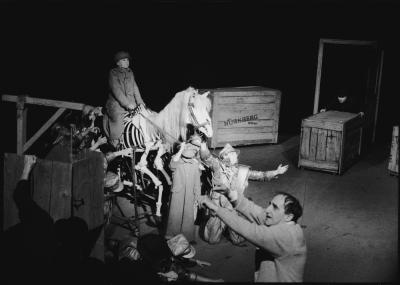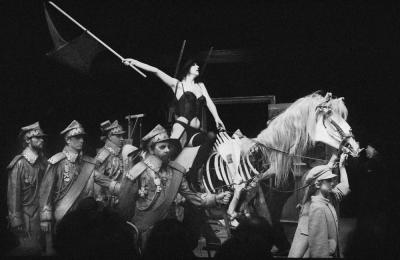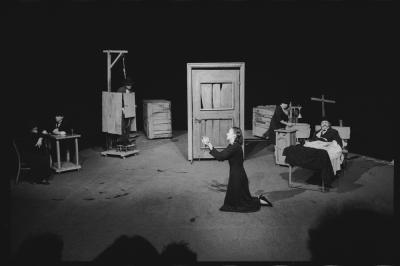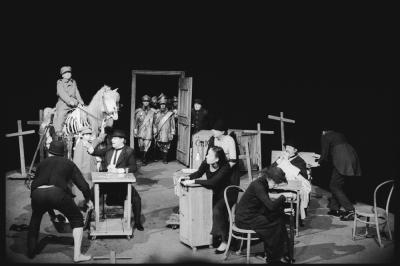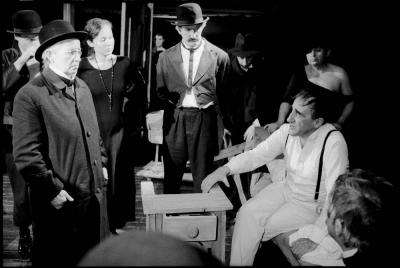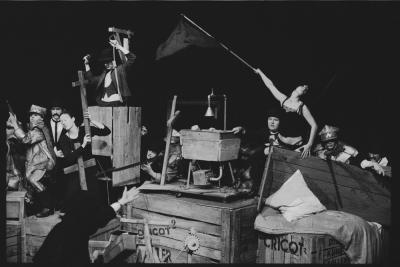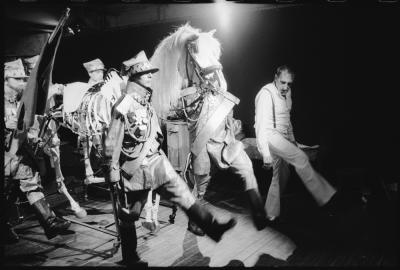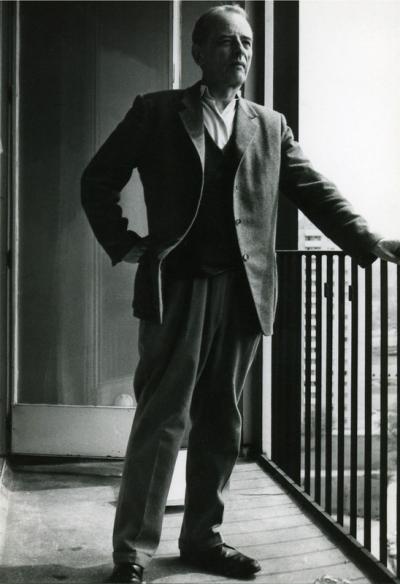Tadeusz Kantor in Nürnberg
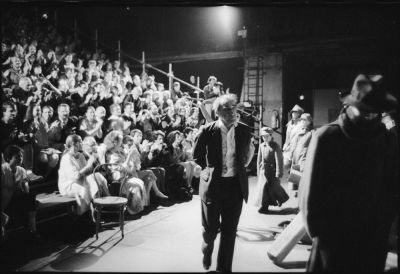
In autumn 1955 he joined forces with Maria Jerema and Kazimierz Mikulski to set up the “Teatr Cricot 2” (the name was a reference to the “Teatr Artystów Cricot” that had existed in Kraków between 1933 and 1939). This was principally a continuation of Kantor’s previous work with the “Teatr Niezależny”. Kantor produced the following shows with Cricot 2: “Mątwa” (Cuttlefish, 1956), “W małym dworku” (In the small Country House, 1961), “Wariat i zakonninca” (The Madman and the Nun, 1963) “Kurka Wodna” (The Coot, 1967), “Szewcy” (The Shoemaker, 1972) “Nadobnisie i koczkodany” (Graces and Scarecrows, 1973), “Umarła klasa” (The Dead Class, 1975), “Wielopole, Wielopole” (1980), “Niech sczezną artyści” (Artists should Croak, 1985), “Nigdy tu już nie powrócę” (I Shall Never Return Here, 1988), “Dziś są moje urodziny” (Today is my Birthday, 1991). After “Umarła klasa” at the very latest Cricot 2 had made a name for itself in the history of the theatre. There followed a series of international tours, awards and prizes. Tadeusz Kantor and his ensemble were now recognised as the re-inventors of European theatre in the period after the Second World War. He was working on stage right to the end. Tadeusz Kantor died in Kraków on 8th December 1990.
As early as 1977 the banker and arts patron Karl Gerhard Schmidt suspected that Tadeusz Kantor would become one of the most important artists of his age; and he was confirmed in his opinion in 1985 when he brought Kantor’s play “Artists should Croak” to Nuremberg. The company travelled from Kraków to Nuremberg at the end of April 1985 in order to continue their rehearsals on the play with Italian actors. The rehearsals were not easy. Kantor was moody, at times impolite, and at other times friendly. Barbara Ziegler, who was responsible for organising the stay, had a nervous breakdown. But Schmidt took her place and mastered the situation with bravura and a trick. He brought his wife to rehearsals well knowing that this “old school”gentleman would conduct himself much more quietly in her presence. As planned the premiere took place on 2nd June 1985. The play’s main themes are impermanence, dying, death and rituals after death. As in other works by Kantor there is no real plot. There are old pictures, faded photographs, fragments of memory, major historical events and insignificant lives in small back yards, all of which make up a framework and basis for a universal message.
At the centre of Kantor’s ideas there is the “room”, here a cemetery in which the almost forgotten dead rise up once again in a spiritual act. There is an ailing six-year-old boy, a group of grotesque army officers who seem to act like tin soldiers, a general riding the skeleton of a horse, and typical Kantor characters from the “lower depths” like the “card player”, the “prostitute”, the “hanging man”, the “jailer”, the dishwasher”, the “prüde” and the “dirty brat”, who continually reappear in Kantor’s art. And in the midst of all this there is Veit Stoß, one of the most famous mediaeval artists (born ca. 1447 in Horb am Neckar, died 1533 in Nuremberg), and one of Kantor’s most important artistic reference persons. Here Kantor has created a spectacular show in which the life of the great artist, death and transience are revealed in a seemingly never-ending review.
The old “Kabelmetal Casting Forge” in Nuremberg was specially adapted to meet the requirements of Teatr Cricot 2, and the show was sold out on the evening of the premiere on 2nd June 1985 and the following five performances. It proved to be an overwhelming success both for Tadeusz Kantor and for the Nuremberg theatre world (the applause lasted 15 minutes). As a result the Institute of Contemporary Art and its associated publishing house released richly illustrated books on Tadeusz Kantor, his art and his time in Nuremberg. One of these was the hitherto most comprehensive collection of Kantor’s theoretical texts, “A Traveller. His Texts and Manifestos”. Even today Karl Gerhard Schmidt can count himself lucky to be the owner of a huge number of pictures by Tadeusz Kantor. His private collection can be found in Nuremberg.
Adam Gusowski, May 2015
